Welsh National War Memorial
The Library archive holds material that brings vividly to life the early history of the Museum and of life in and around Cardiff during the early 20th century. As we approach the centenary of the end of the First World War, we take a look at the efforts to create a Welsh National War Memorial.
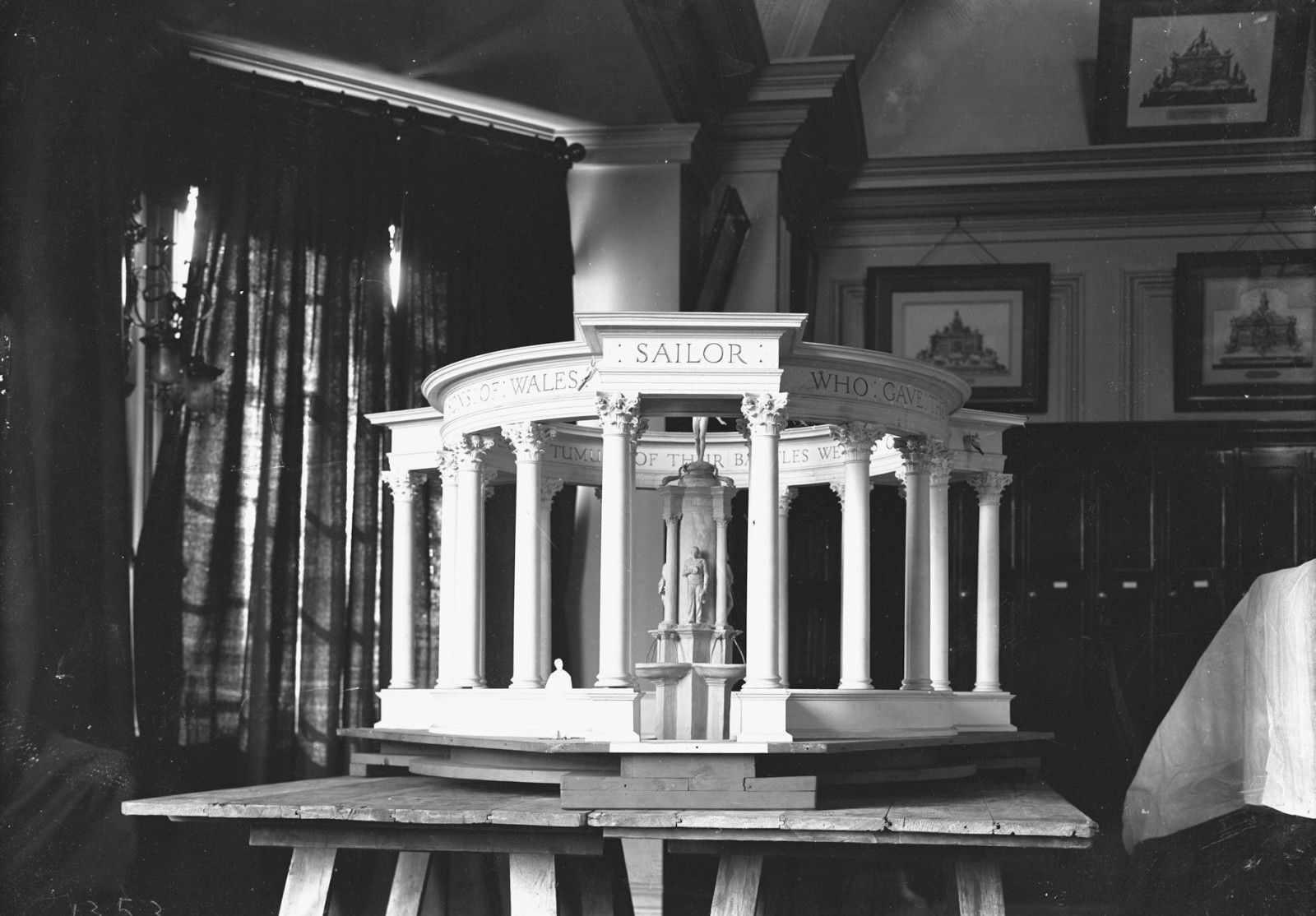
The movement to establish a national memorial in Cardiff was instigated by the Western Mail in October 1919. A committee was established to oversee the project with the then Lord Mayor, G. F. Forsdike, at its helm. The fund closed in 1921 having raised £27,500 and a commission to design the monument was offered to Sir Thomas Brock, designer of the Victoria Memorial outside Buckingham Palace. However, Brock’s original design, although considered “very beautiful and imposing” [1], proved to be too expensive and he died before submitting a further proposal. Therefore in 1924 the committee invited a select group of architects to submit designs in a limited competition. The winning design was by Ninian J. Comper, acknowledged today as one of the last of the great Gothic Revival architects [2].
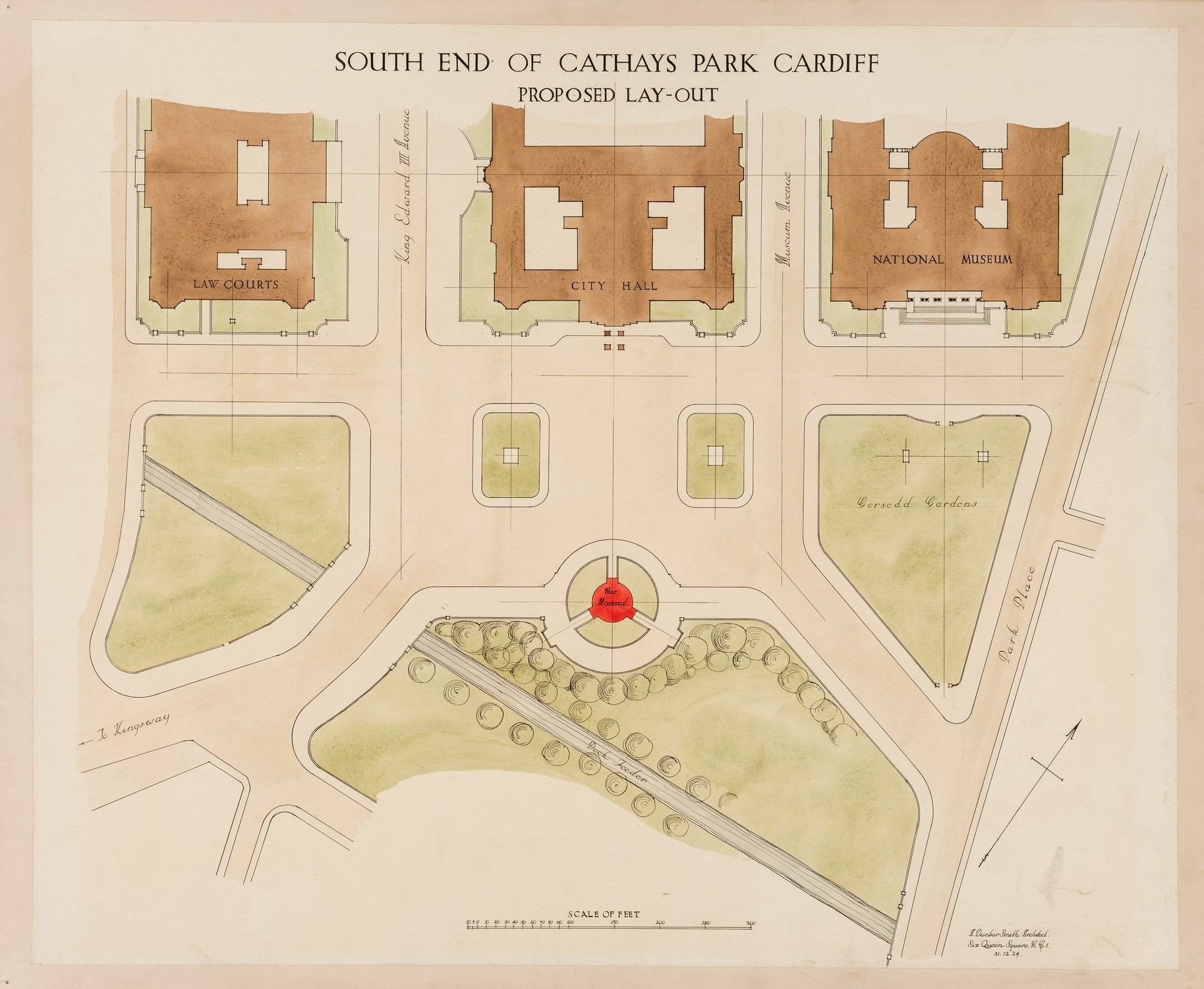
The committee wanted to place the memorial on a circular plot of land directly in front of City Hall. The Library holds original drawings that show the proposed site. They are signed by A. Dunbar Smith who, along with his partner Cecil Brewer, designed our very own National Museum Cardiff building.
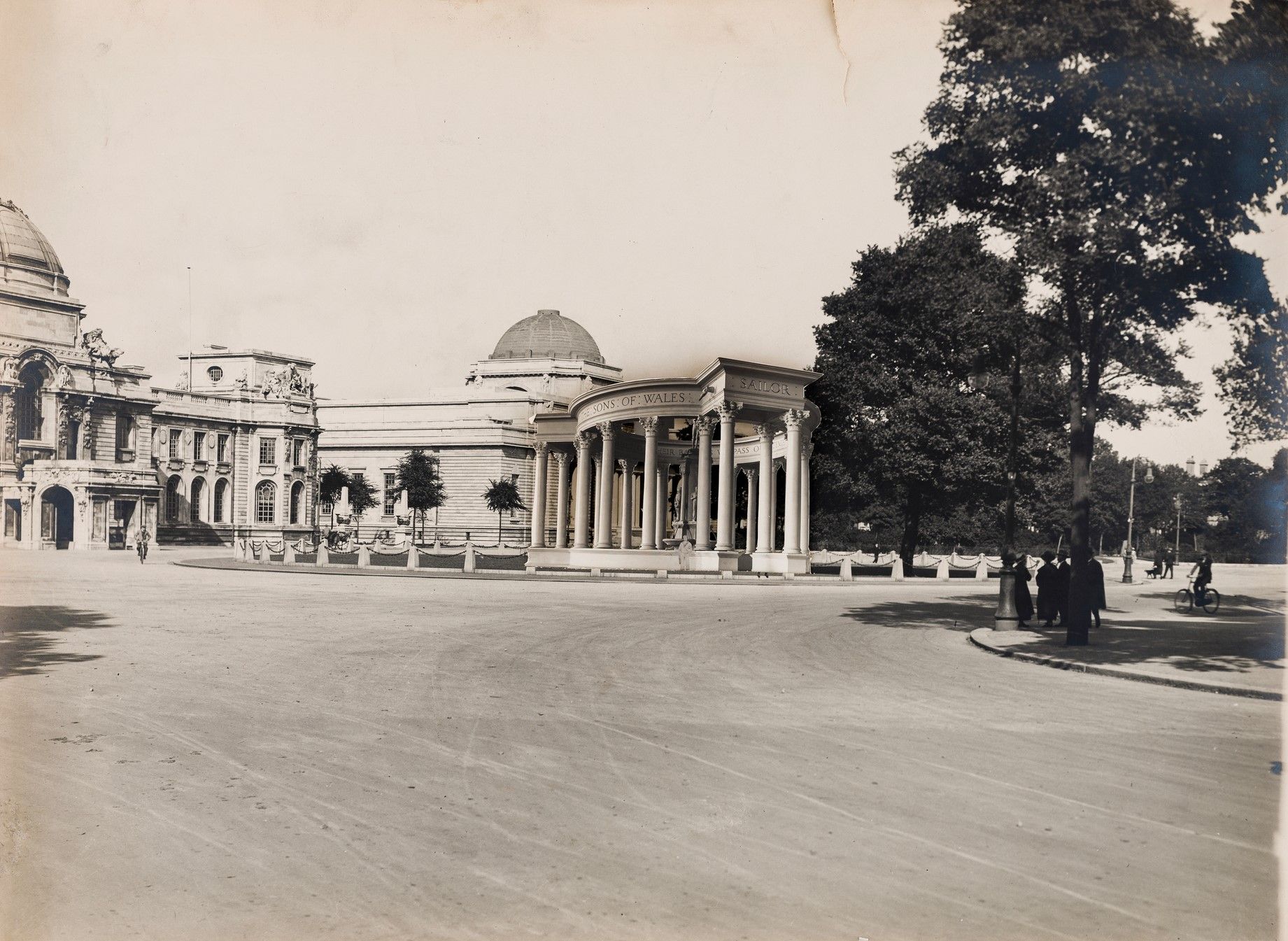
At some point someone decided to get creative and produce a photo-collage to illustrate how it might look. We have a number of A3 sized photographs of the view in front of City Hall, with a photograph of a model of the memorial cut out and slotted into place to show it in situ. We don’t know who the creative was, but it obviously did the trick, as the next stage was to build a life sized frame of the monument in position.
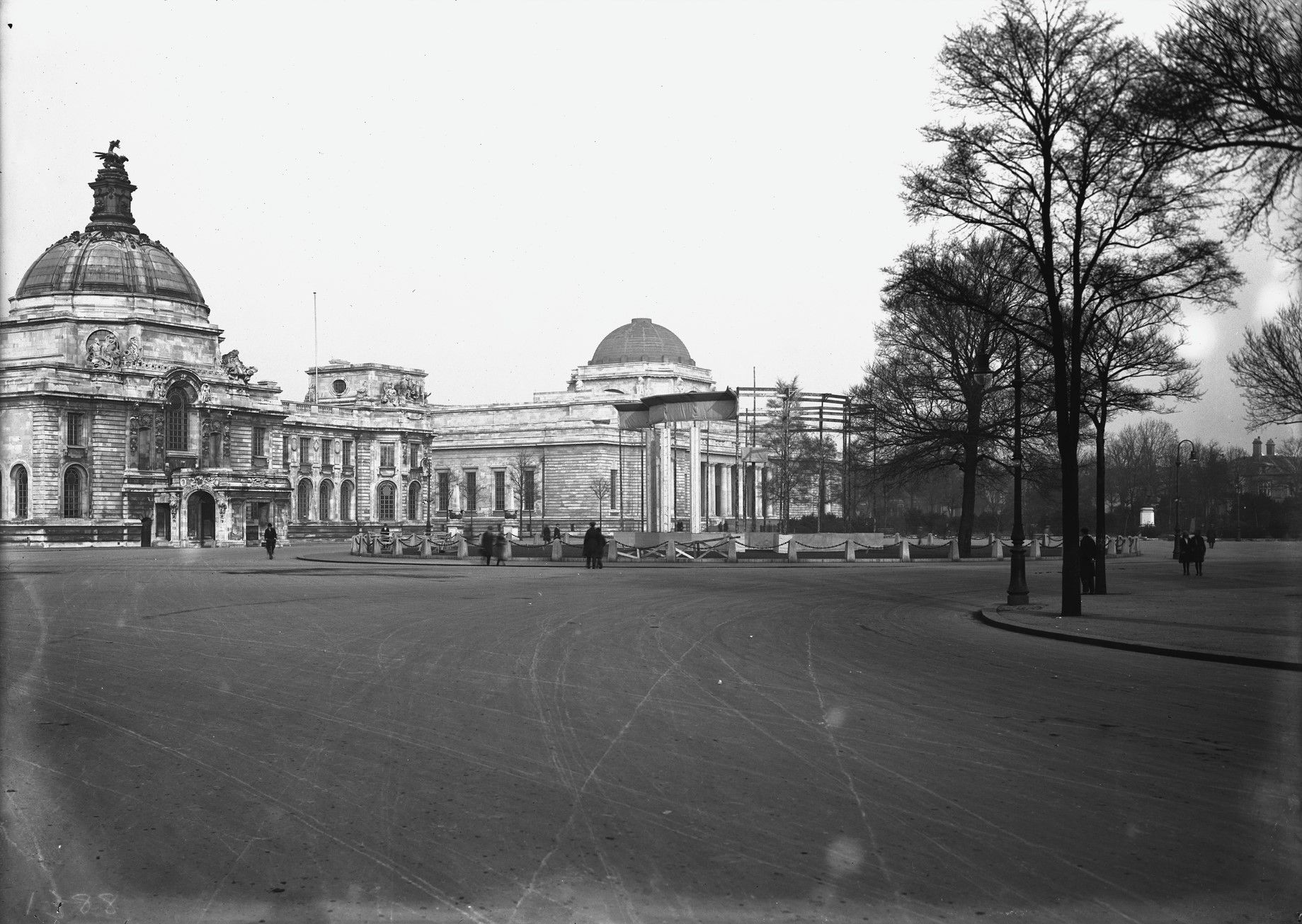
We hold photographs showing it in place and partly covered in canvas to represent its solid form. However, this had the opposite of the intended effect by prompting both the Museum and City Hall to object [3]. One would have to agree with them looking at how close the formidable sized memorial would have been to these buildings.
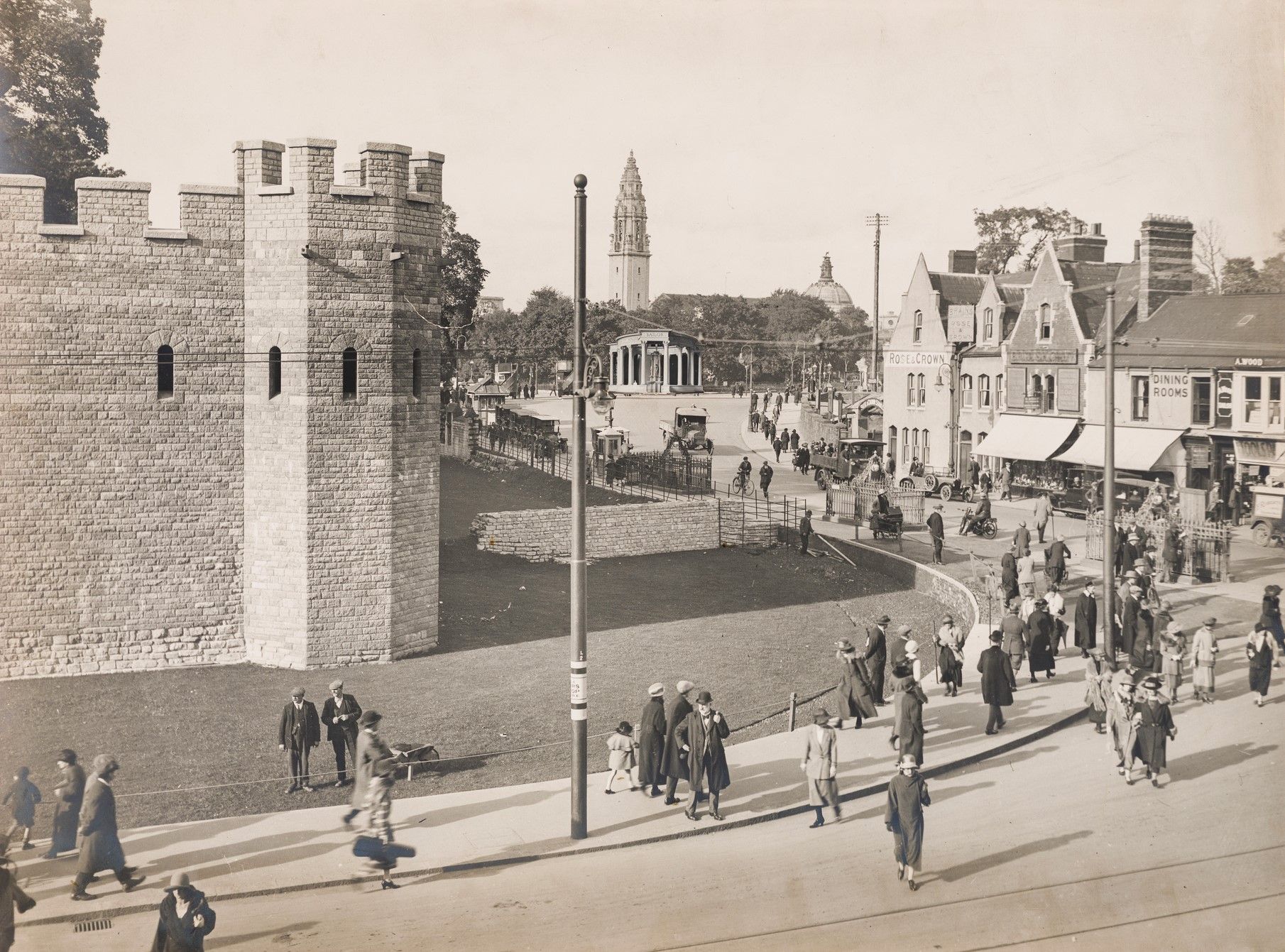
So, our mystery creative got to work again with another collage showing the memorial in a different location. This photograph, taken from Queen Street looking towards Cathays Park, has a cut out of the model glued into place in Friary Gardens. Frustratingly, this location was objected to by the Marquess of Bute because it had been specified in the documents of transference of Cathays Park to the city, that no buildings would be erected on that site [4].
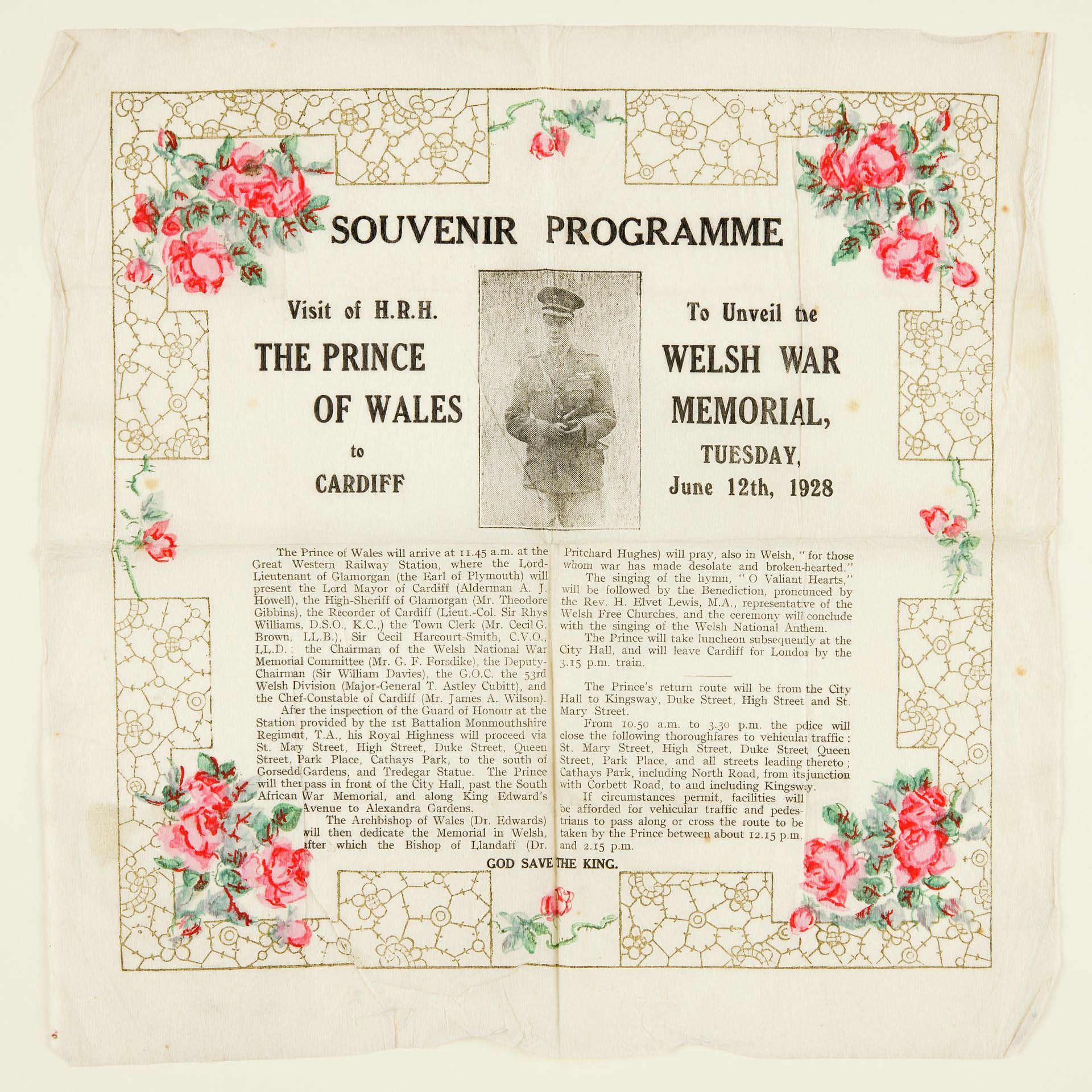
Thankfully by August 1925 the present site in Alexandra Gardens was chosen and Comper was finally instructed to proceed with the work. This commenced in March 1926 and was completed by early 1928, with construction carried out by E. Turner & Sons.
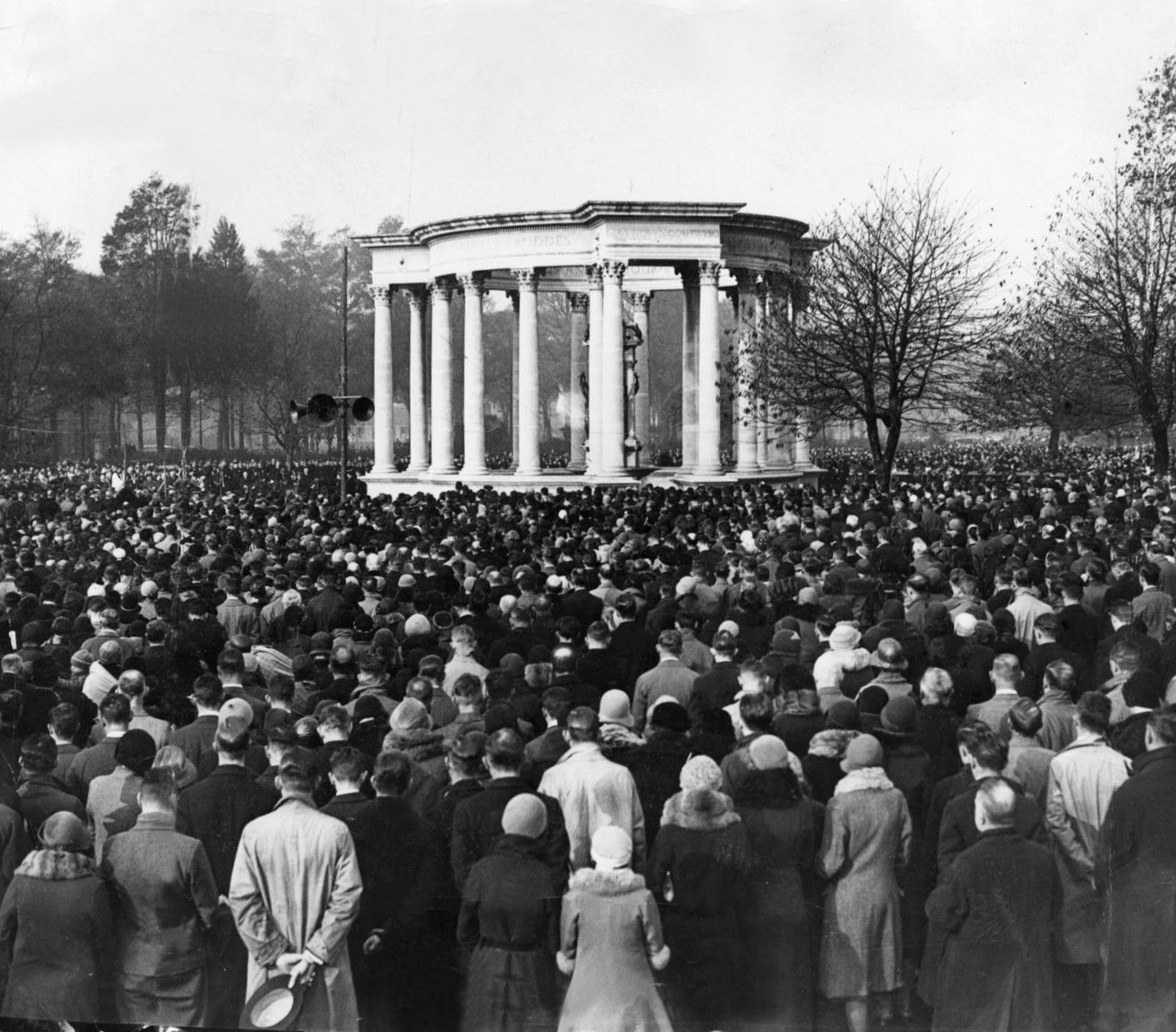
Newspaper cuttings report that the ceremony of unveiling and dedication was carried out by the Prince of Wales on 12 June 1928 in front of nearly 50,000 people. One report tells how the Prince was given a Welsh lesson by David Lloyd George in the train on their way down from London so that he might deliver part of his speech in Welsh [5].
Photo: By kind permission from the Western Mail
Other items of interest held concerning the memorial and the First World War can be found online here.
References
- Welsh National War Memorial Official order of service at the ceremony of unveiling and dedication by H.R.H. The Prince of Wales on June 12th 1928. Cardiff: Western Mail, p.8.
- Symondson, A. & Bucknall, S. 2006. Sir Ninian Comper: an introduction to his life and work with complete gazetteer. Reading: Spire Books, p.198.
- Welsh National War Memorial Official order of service at the ceremony of unveiling and dedication by H.R.H. The Prince of Wales on June 12th 1928. Cardiff: Western Mail, p.10.
- Gaffney, A. 1998. Aftermath: Remembering the Great War in Wales. Cardiff: University of Wales Press, p.45.
- Amgueddfa Cymru - National Museum Wales Library cuttings file [Daily Chronicle 15/06/28].
Comments - (3)
Sincerely
David
Dear Sinead,
Thank you very much for your enquiry. The Welsh inscription on the outside frieze reads 'I Feibion Cymru a roddes eu Bywyd dros ei Gwlad yn Rhyfel MCMXIV–MCMXVIII' which translates as 'To the sons of Wales who gave their lives for their country in the war of 1914–1918'. The inscriptions on the porches framing statues of a soldier, a sailor and a pilot, representing the three Armed Forces, were composed by the poets T. Gwynn Jones and R. Williams Parry. I will quote the translations given in Edgar Chappell's 'Cardiff's Civic Centre: A Historical Guide' (1946) as they are quite poetic in themselves:
Dros Fôr fe droes i farw (Over the sea he went to die).
Ger y Ffos yn gorffwyso (Nigh the trench—resting).
Yn y Nwyfre yn hofran (Grappling in the Central Blue).
Best wishes,
Marc
Digital Team